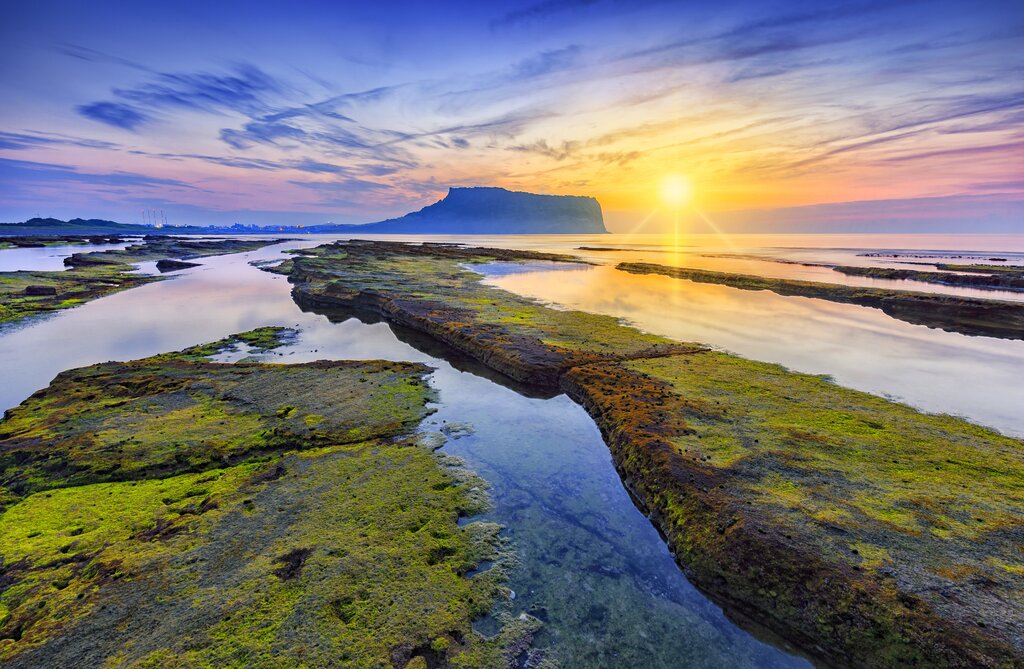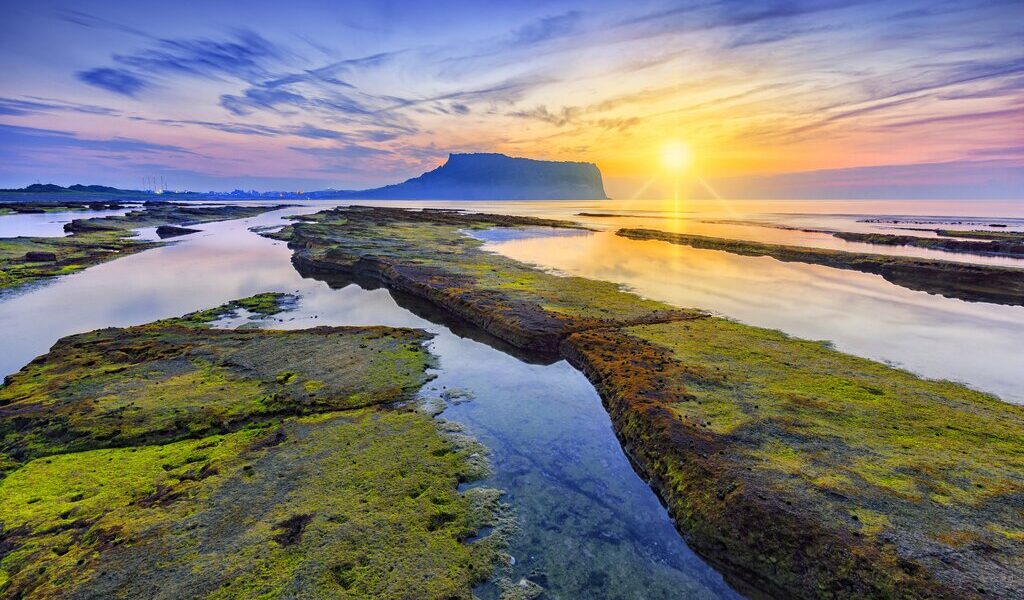
August marks the end of summer in South Korea, though temperatures and humidity remain high throughout the month. Take a tropical getaway to Jeju Island, where you can spot bottlenose dolphins. On the mainland, travel to the country’s popular east coast beaches, but don’t forget about the lesser-known (and often less crowded) western shores. The end of the month is the best time to visit, as temperatures and humidity levels drop and children return to school, alleviating crowds.
The following details travel in South Korea during August, offering insights into weather patterns, popular destinations, activities, and key events. For those planning a trip during this time, understanding these aspects can significantly enhance the travel experience.
**Weather Conditions in August**
August in South Korea marks the tail end of the summer season, but it largely maintains the characteristics of peak summertime. Sharing the distinction of being the hottest month of the year alongside July, August experiences an average high temperature of approximately 82°F (28°C). Nighttime brings little respite, with balmy average low temperatures lingering around 68°F (20°C).
Beyond the heat, rainfall is a significant factor to consider. August rivals July in terms of precipitation, with an average of 14.3 inches (364 mm) of rainfall typically recorded in **Seoul**. The high humidity levels contribute to the overall feeling of warmth and stickiness. While there is a gradual decrease in rainfall and humidity as the month progresses, it remains advisable for travelers to be well-prepared for wet conditions. Packing essentials like umbrellas and raincoats is highly recommended, and regularly checking weather forecasts can help in planning daily activities accordingly.
**Crowds and Costs Associated with Travel**
The summer season in South Korea, despite the challenging weather conditions, continues to attract a substantial influx of both domestic and international tourists. A major contributor to this influx is the summer break for school children in South Korea, which typically spans from mid-July to the latter part of August.
Consequently, popular tourist destinations, especially those catering to families, tend to be quite crowded during this period. However, there is a noticeable shift towards the end of August as schools reopen. This transition presents a more opportune time to visit, as the large crowds begin to thin out.
Furthermore, the gradual decrease in humidity levels, a marginal cooling of temperatures, and a decline in flight prices all contribute to making late August a more appealing time for travel. Planning a trip towards the end of the month can lead to a more comfortable and cost-effective experience.
**Destination Highlights: Where to Go in South Korea**
South Korea offers a diverse array of destinations, each with its own unique charm and attractions.
**Jeju Island**, located in the Korea Strait, is the country’s largest and most populous island. During the summer months, it becomes a vibrant hub for sunbathers and water sports enthusiasts. The island’s biodiversity is a major draw, offering opportunities for snorkeling and scuba diving to explore its underwater wonders. Visitors can also indulge in various water activities such as sailing, kayaking, and parasailing in the island’s clear blue waters. A highly recommended experience is booking a dolphin-watching tour, which provides the chance to observe Indo-Pacific bottlenose dolphins in their natural environment.
On the mainland, the east coast is home to a number of popular vacation destinations. **Gangneung**, a city that gained prominence as a host of the 2018 Winter Olympics, transforms into a summertime paradise. Visitors flock to **Gyeongpo Beach**, the largest beach on the east coast, to enjoy its sandy shores and refreshing waters. Continuing south along the coast, **Pohang** offers stunning seaside views and is renowned for its fresh fish markets, a must-visit for seafood lovers.
Further down the coastline lies **Busan**, a bustling city with seven beaches. It attracts thousands of visitors each summer, particularly during the celebrated **Busan Sea Festival**, which takes place at the end of July and the beginning of August.
While the east coast beaches are often considered the country’s best, the west coast offers quieter, equally appealing alternatives. Travelers staying in **Seoul** can escape the city heat with a day trip to **Boryeong**, a mid-sized city situated along the Yellow Sea, less than a two-hour drive from the capital. Driving another hour further south will lead to **Byeonsan Beach**, a charming and tranquil spot bordered by a picturesque fir tree forest. It’s an excellent location for tide-pooling, offering the chance to discover clams, mussels, and other shellfish when the tide recedes.
**Activities to Enjoy During Your Trip**
August in South Korea is synonymous with water-themed activities. Spending time at the beach or visiting one of the country’s many water parks are popular choices. For adventure travelers seeking an alternative to the beach, river rafting excursions are readily available. Popular rafting spots include the **Donggang River** and the **Naerincheon Stream**, offering thrilling experiences amidst stunning natural scenery. For a more relaxed experience, renting a kayak or canoe to explore the country’s scenic lakes and rivers is a wonderful way to appreciate the beauty of the landscape.
Connecting with nature through hiking and camping is a year-round activity in South Korea, and summer is no exception. To avoid the highest temperatures, it’s best to hike early in the day or to choose locations in the mountains or along the coast where the weather is more temperate. The same advice applies to visitors exploring South Korea’s major cities: mornings and evenings are the ideal times to venture out and explore, while the sweltering afternoons are best spent enjoying an iced coffee at one of the country’s famous cafés.
August also provides the last chance to attend one of the country’s well-known summer festivals. The **Mud Festival** in **Boryeong** at **Daecheon Beach**, which takes place at the end of July and the beginning of August, is a unique event where the region’s mineral-rich mud is transported onto the beach from the mudflats. The **Busan Sea Festival**, held around the same time, attracts thousands of visitors to party on Busan’s beaches. Smaller regional festivals, such as the **Muju Firefly Festival** and the **Bonghwa Sweetfish Festival**, provide an opportunity for tourists to learn about the distinctive characteristics of each of South Korea’s eight provinces.
**Key Events Taking Place in August**
* **Boryeong Mud Festival**, **Daecheon Beach**: Daecheon Beach in Boryeong is transformed into a festival celebrating the region’s mineral-rich mud. The festival includes activities such as mud wrestling and a giant mudslide, and takes place in July and August.
* **Busan Sea Festival**, **Busan**: This summertime festival, held at the end of July and beginning of August, spans five beaches across Busan. It features vibrant nightlife, concerts, and dance parties.
* **Muju Firefly Festival**, **Muju**: This ecotourism festival, taking place at the end of August and/or the beginning of September, celebrates South Korea’s fireflies, which feed on marsh snails native to Muju.
* **Bonghwa Sweetfish Festival**, **Bonghwa**: Visitors can fish (barehanded or with a net) for the local delicacy of sweetfish at this summer festival. The festival also features a lively night market, a children’s water park, and other attractions.
* **Incheon Pentaport Rock Festival**, **Incheon**: This summertime music festival showcases popular rock musicians from around the world.
* **Jeongnamjin Jangheung Water Festival**, **Jangheung**: Cool down at Jangheung’s annual water festival, featuring a variety of water-themed games and activities.
B-2316

